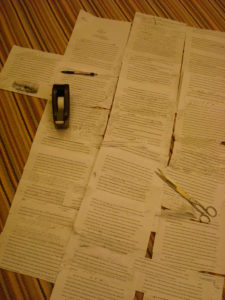Robert Caro Stresses ‘Sense of Place’ in Biography

Robert Caro at New York Public Library (Photo by Sylvain Gabourney/PM/AP)
There’s no greater master of biography writing today than Robert Caro. I recall being mightily impressed with his keynote speech at the 2011 conference of Biographers International Organization (BIO).
So I’m grateful to Steve Weinberg, a journalist and biographer (and one of my former journalism profs at the University of Missouri), for flagging this article in The Daily Beast. It describes the evolution of Caro’s ground-breaking first book, on New York developer Robert Moses: The Power Broker’ Turns 40: How Robert Caro Wrote a Masterpiece.
Caro’s keynote speech to BIO discussed the importance of place and setting in writing about someone’s life. I’ve since discovered it’s one of Caro’s persistent themes:
[I]f the place, the setting, played a crucial role in shaping the character’s feelings, drives, motivations, insecurities, then by describing the place well enough, the author will have succeeded in bringing the reader closer to an understanding of the character …
The message resonated with me because I’ve focused a lot on conveying a sense of place in my biography of Eliza Scidmore.
“The greatest of books,” Caro said in his BIO speech, “are books with places you can see in your mind’s eye.”
I keep that in mind in striving for vividness of place. It’s important all throughout my book because of Eliza Scidmore’s wide-ranging travels, and the need to make readers see what those worlds looked like in the late 19th century.
Caro cited as examples of great writing about setting:
- the deck of the Pequod, in Moby Dick, when the sailors haul whale parts aboard the ship to melt down for oil
- the battlefield at Borodino, as Napoleon looks down from a hill and has to decide whether to send his men forward into battle
- Miss Havisham’s room in Great Expectations, where she was to have been married and where time stopped after she was jilted
In writing his multi-volume biography of Lyndon B. Johnson, Caro said he and his wife, Ina — his sole research assistant — moved to Texas to gain insight into how life there shaped LBJ’s priorities. He also retraced Johnson’s walk to work at the U.S. Capitol every day, to capture the sense of wonder.
It’s amusing to know that Caro still writes using an electric typewriter. (Major problem: finding a steady supply of black cotton ribbons.)
Caro also cuts and pastes his text when editing and revising — which I do, too! It’s been my practice since writing long news and feature articles many years ago. I need to see a piece in its entirety, on paper, in revising for structure, transitions, balance, and story flow, to move sections around and make notes in the margins.
Unlike Caro, I use a computer. But I do have my own writing-tool quirk: I must use Zebra-brand pens and mechanical pencils.
